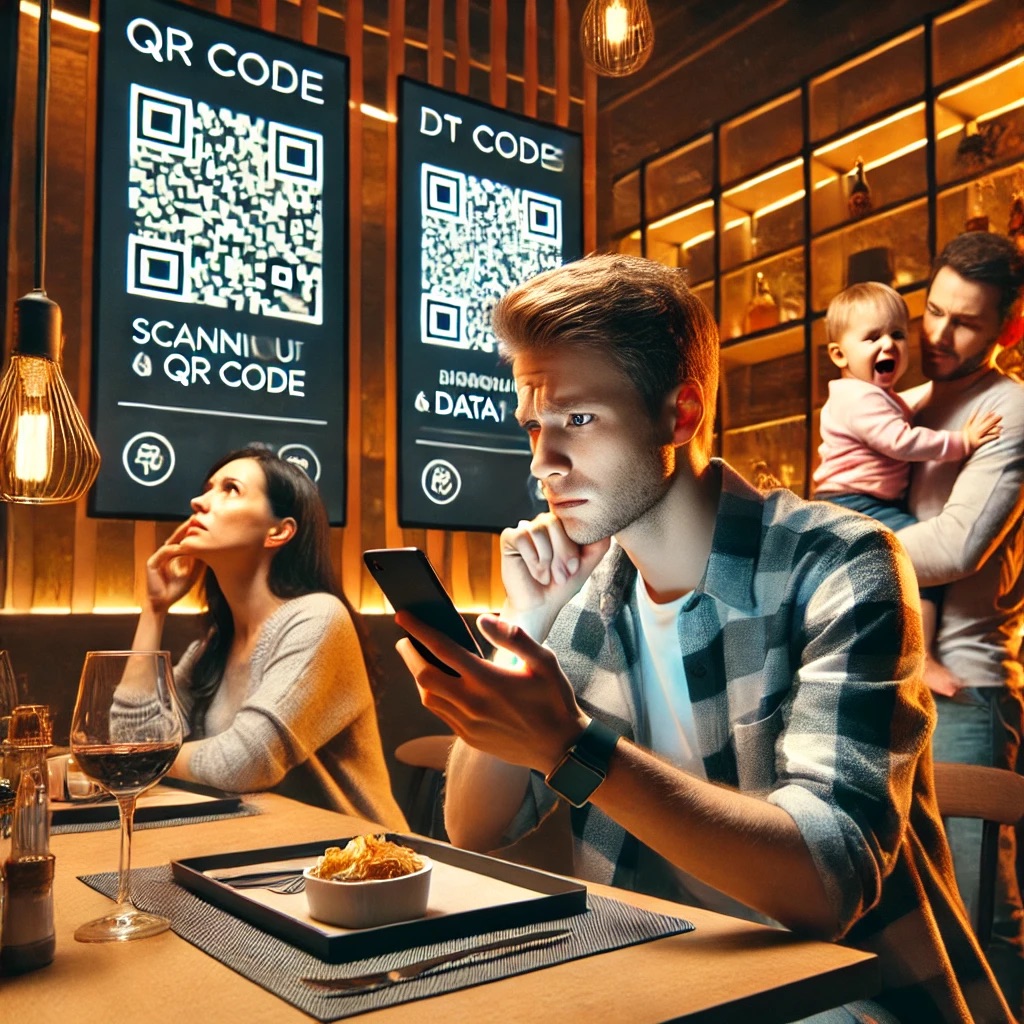The COVID-19 pandemic accelerated the digital transformation of the restaurant industry, with QR code-based smartphone ordering systems becoming increasingly common. While businesses benefit from reduced labor costs and streamlined operations, not all customers have embraced the shift. Many find the experience frustrating, citing concerns over data usage, battery life, and overall user convenience.
“Why Is the Customer Paying for the Internet?”
For many diners, the expectation of using their personal smartphones to place orders feels unfair. A 23-year-old office worker in Tokyo expressed his frustration:
“I often have to be the one scanning the QR code and placing orders when dining with friends. It drains my battery, and I feel like the restaurant is piggybacking off my mobile data. Why can’t they provide tablets instead?”
This sentiment is not unique. A survey conducted by AERA found that 11 out of 36 respondents who dislike smartphone ordering cited extra data consumption as their primary concern. As a result, some restaurants have started offering free Wi-Fi and charging ports, but not all establishments have adopted these customer-friendly measures.
Challenges for Different Demographics
Beyond data concerns, the transition to smartphone-based ordering presents other challenges for various customer groups.
• Parents with young children: A mother from the U.S. shared her struggle:
“Every time I take out my phone to order, my child wants to grab it and play with it. It turns mealtime into a battle.”
• Elderly customers: Many older diners find digital menus difficult to navigate, preferring the familiarity of printed menus or face-to-face interaction with waitstaff.
• Privacy concerns: Some restaurants require customers to add their business accounts on messaging apps like LINE before accessing the menu. This additional step is seen as intrusive and unnecessary by many patrons.
The Unstoppable Growth of Digital Ordering
Despite these complaints, digital ordering systems are here to stay. Recruit’s 2024 survey revealed that the percentage of customers who have used self-ordering systems more than doubled in three years, increasing from 26.0% in 2021 to 57.1% in 2024.
Shou Shinagawa, an analyst at Recruit, predicts that the adoption of smartphone ordering will continue to accelerate:
“Smartphone ordering requires minimal investment, making it an attractive option for small businesses looking to cut costs. More restaurants will implement these systems in the coming years.”
Striking a Balance Between Efficiency and Customer Satisfaction
While digital ordering is becoming the norm, businesses must consider customer comfort to ensure a positive dining experience. Providing alternative options, such as tablets for ordering, clear instructions for elderly users, and guest Wi-Fi, could bridge the gap between efficiency and user-friendliness.
The future of dining is undeniably digital, but restaurants that prioritize convenience without alienating customers will have a competitive edge in this evolving landscape.


